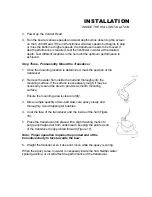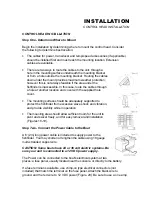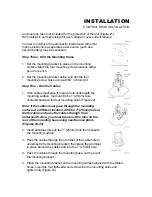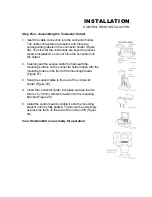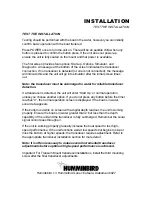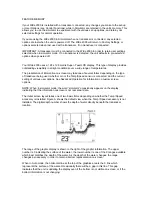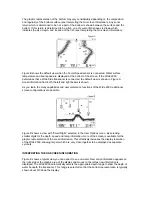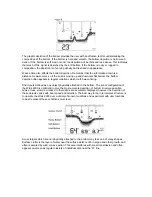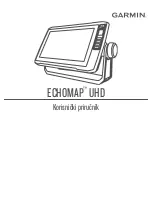
If a Wide Side transducer is being used (see Using Alternative Transducers), the VIEW button is
used to select one of four views available: Both, Left, Right, and Down.
The three lower buttons, MENU, UP, ARROW, and DOWN ARROW work together to control the
Wide 2000 menu-controlled user functions.
MENU brings a menu on-screen for adjustment. In normal operation, pressing MENU repeatedly
will cycle through all available menu headings. A men remains on-screen for several seconds
allowing user adjustment by means of the ARROW keys.
If no adjustment is made in the allotted time, the menu disappears. If you need the menu to
remain on-screen longer to study the adjustment options, press and hold MENU- the menu will
remain on-screen indefinitely. Once you release the menu button, the menu will time out. Once a
menu times out, it is still considered the active menu. Pressing MENU will bring up the last used
menu.
The UP ARROW and DOWN ARROW make adjustments to menu functions. On the left side of
every menu there are UP ARROW and DOWN ARROW symbols. The symbols indicate which
ARROW button has a function in a particular situation. Either one or both ARROW buttons can be
used to adjust the menu function. A hollow ARROW symbol means that the corresponding
ARROW button has no function. Pressing that button will result in no adjustment and the “error”
audible will be heard. A solid ARROW symbol means that the corresponding ARROW button can
be used to affect the menu adjustment.
The ARROW buttons often can be used when no menu is on screen. In these situations, pressing
the ARROW button affects the function of the active (last-used) menu. This is a short-cut to menu
operation. The menu appears on-screen while the adjustment is made and “times out”. A
frequently used menu can be adjusted very quickly using this technique. After an adjustment is
made to a menu function, the menu “times out” after several seconds and the unit will return to
normal operation. The sequence in which the menus appear is adjusted by the order that the
menus are used. The last menu adjusted will always appear first. The second most recently used
menu will appear second, etc. This “automatic sequencing” ensures that the most recently used
menus will always appear first, and menus which have not recently been adjusted will appear
later in the sequence.
Содержание Wide 2000
Страница 1: ......

